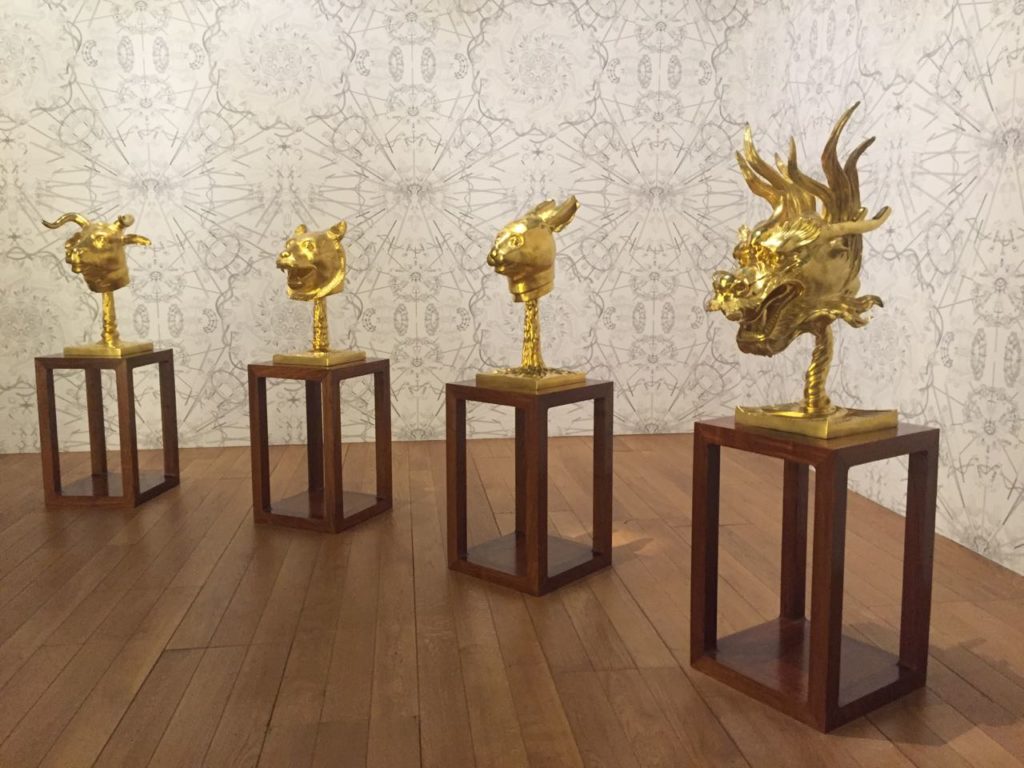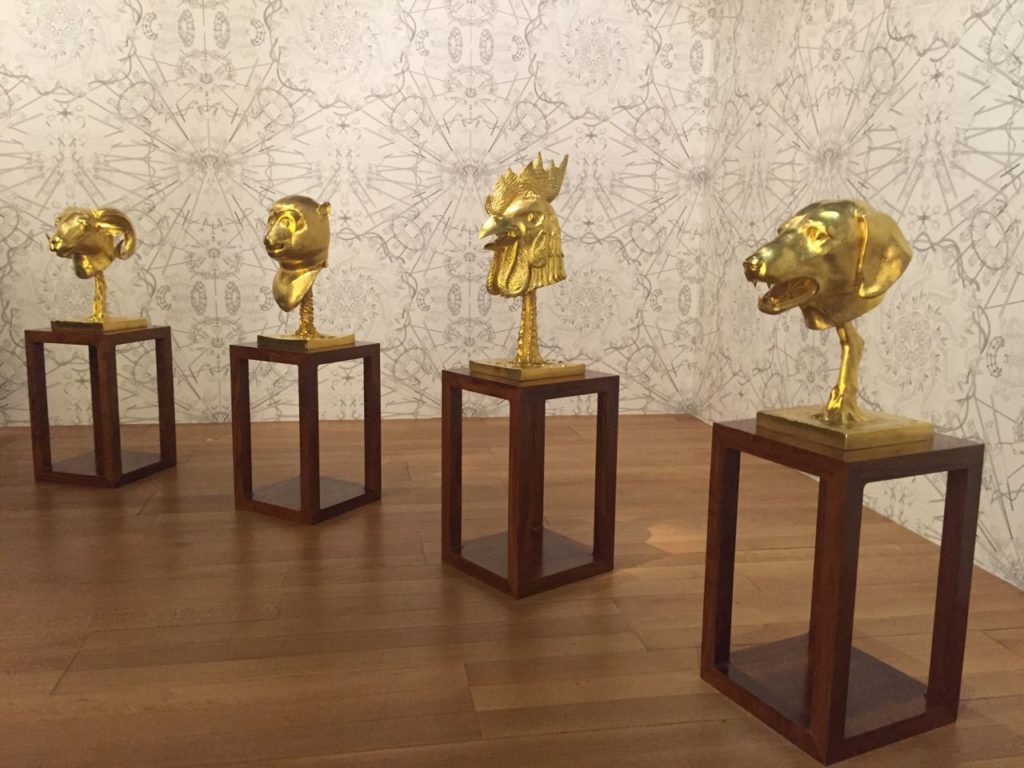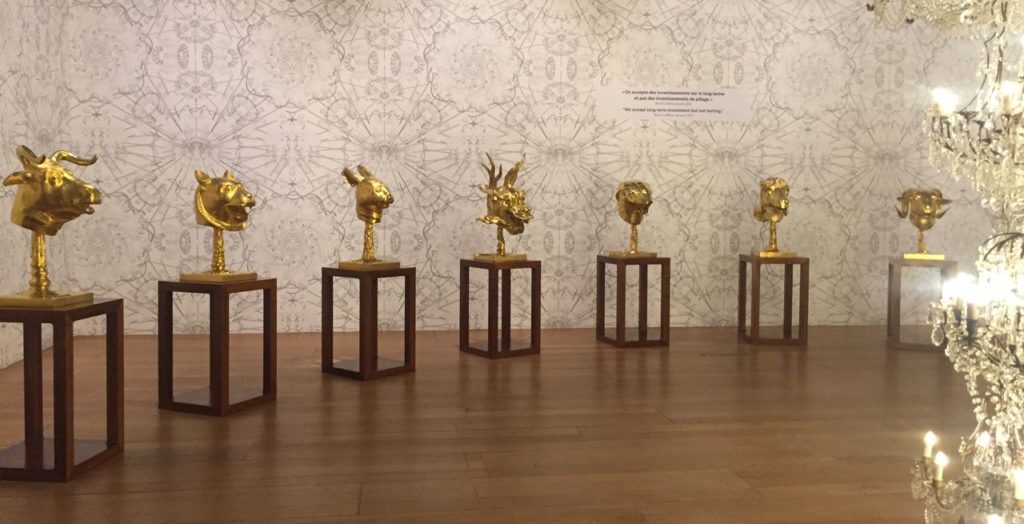THE 2018 event in Marseille, a must see! Some descriptions taken from the Mucem website, link here
Ai Qing’s funerary mask.
Ai Qing was Ai WeiWei’s father, a major poet, his father was a low-key activist and was consequently detained by the Nationalist regime on the suspicion that he was a Leftist. He was also imprisoned by Chairman Mao’s regime after the formation of the People’s Republic of China, this time on the suspicion of being a Rightist.
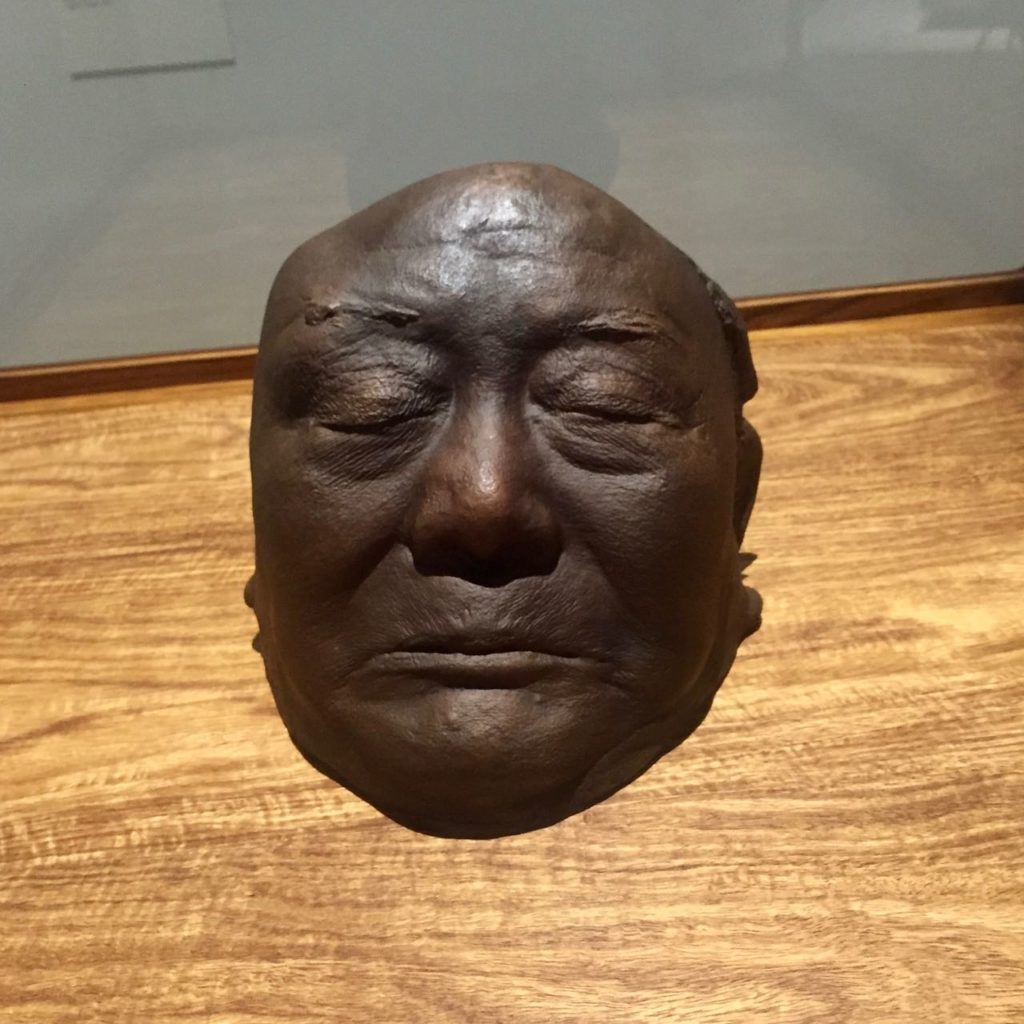
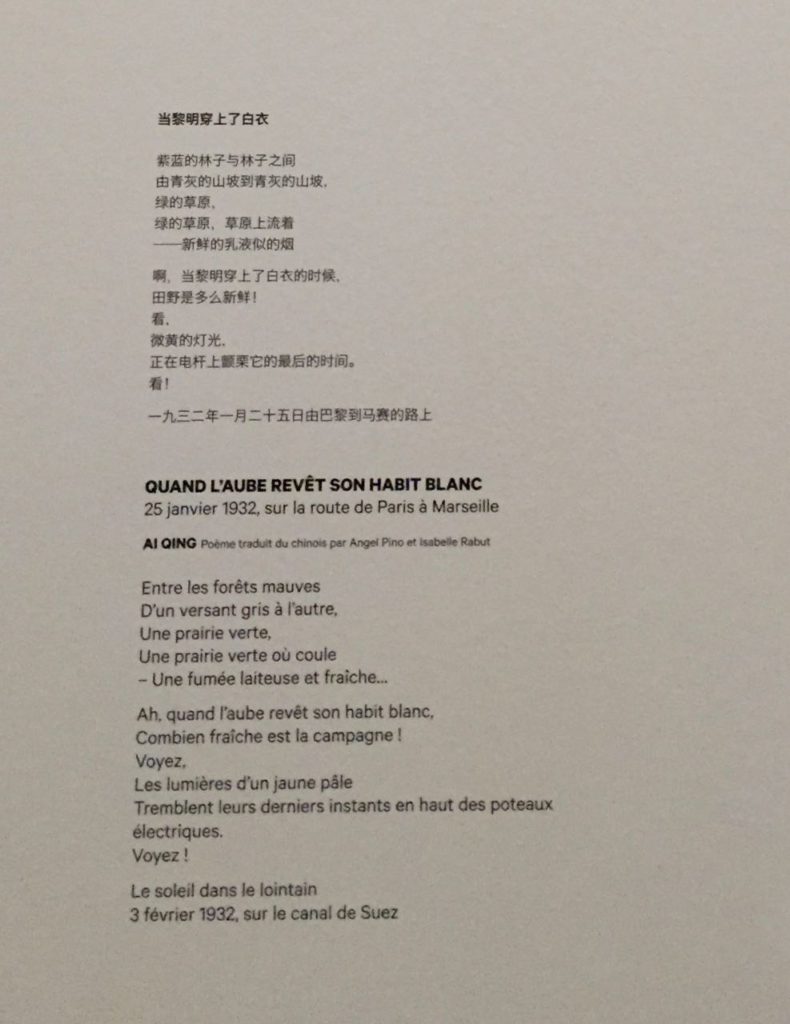
For this exhibition, Ai Weiwei has created two works in Marseille soap. Using traditional techniques with an olive oil base. Each one weighs a ton. These artworks, which are in the spirit of the ready-made, are engraved with the Declaration of the Rights of Man and of the Citizen of 1789 and the Declaration of the Rights of Woman and of the Female Citizen, written in 1791 by the revolutionary Olympe de Gouges, who was executed in 1793. Imprinted into the soap, these texts can disappear with use since soap also has a cleansing symbolism. But can it wash consciences clean?
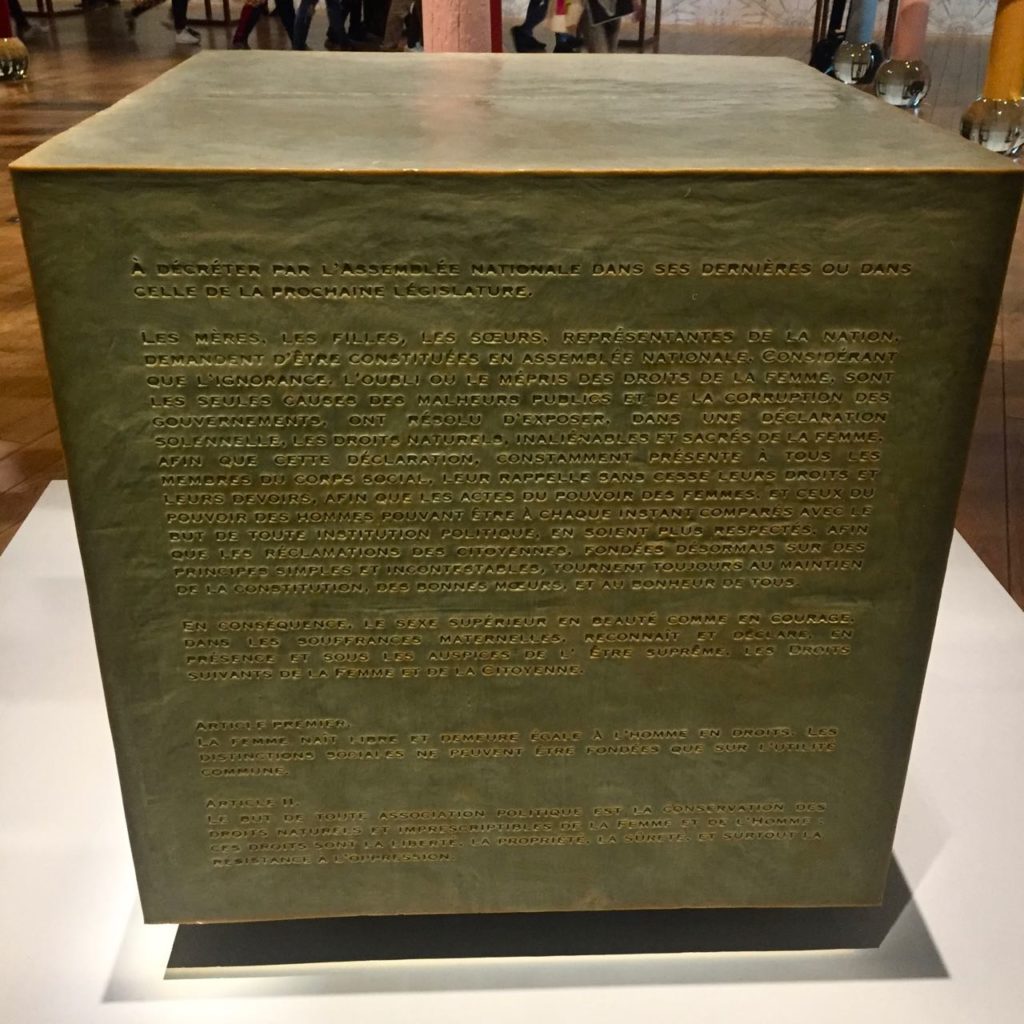
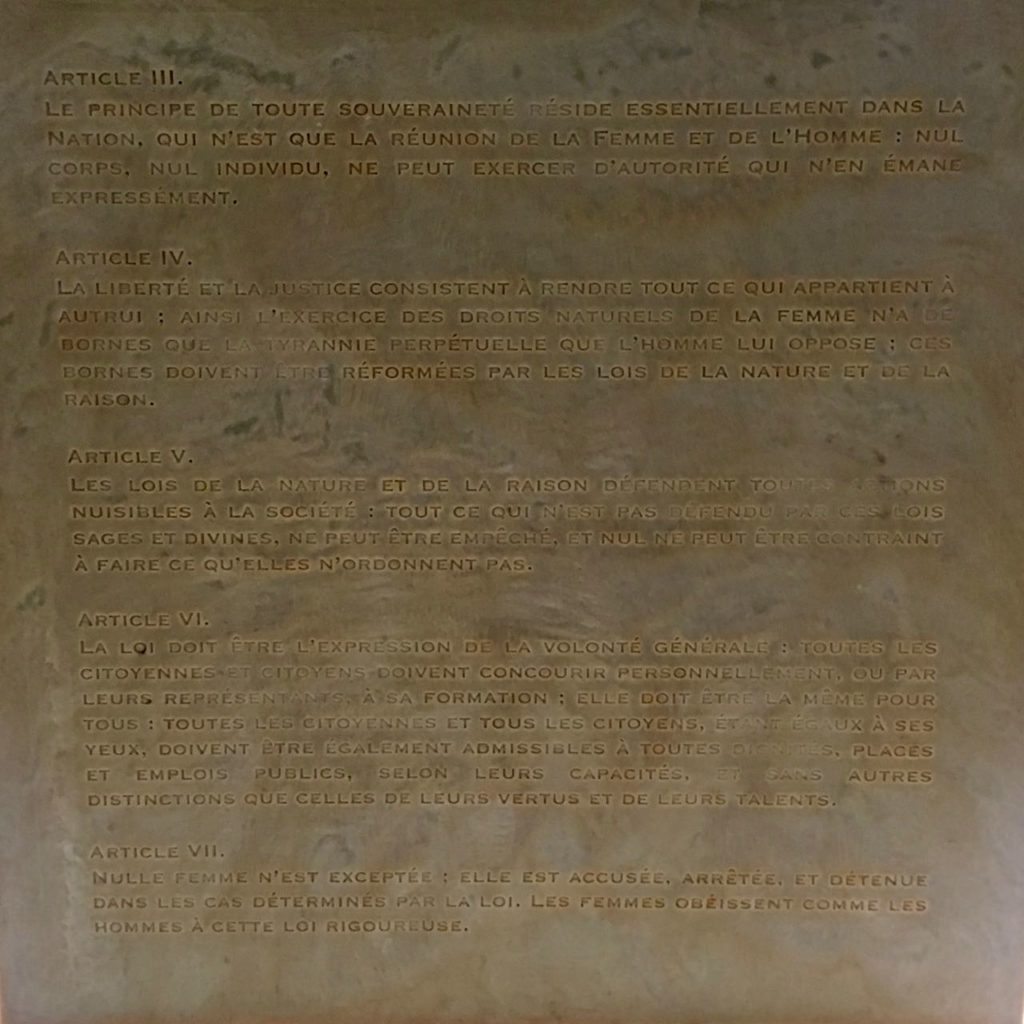
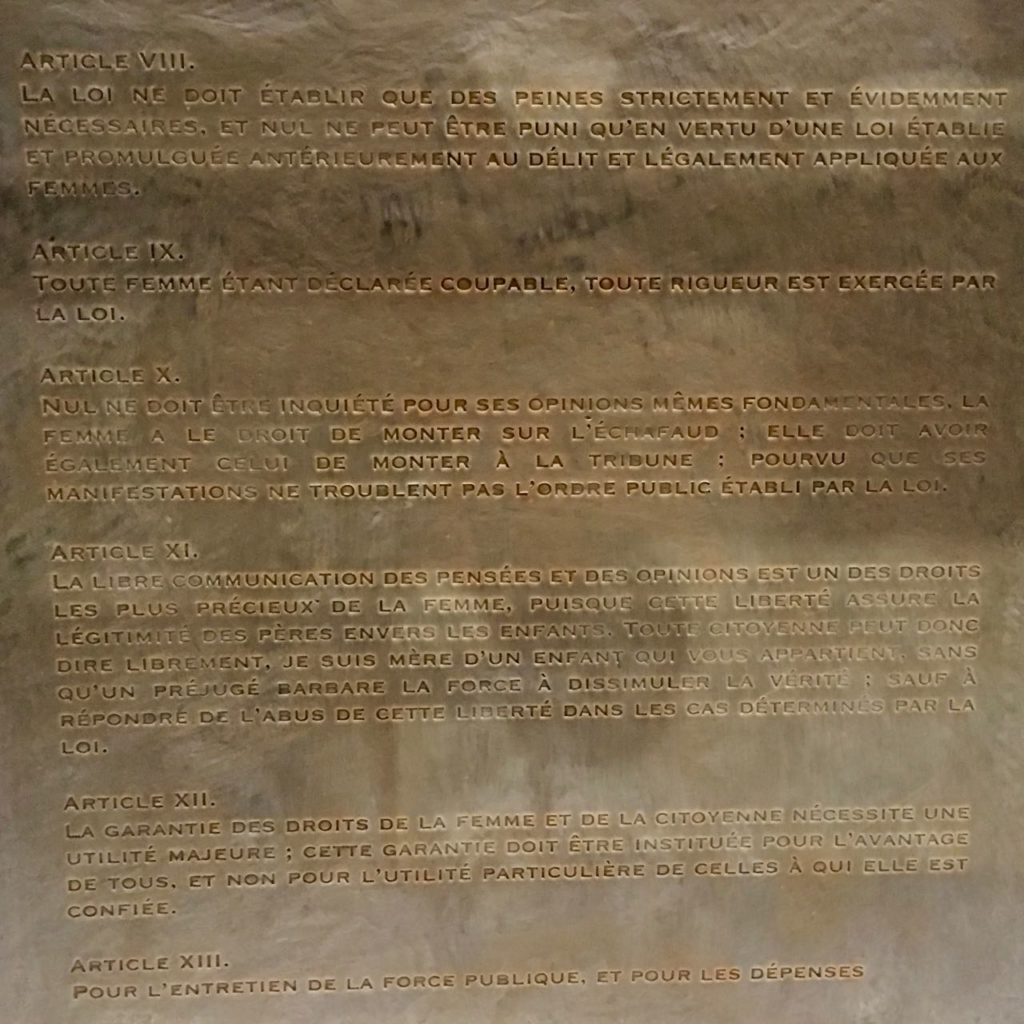
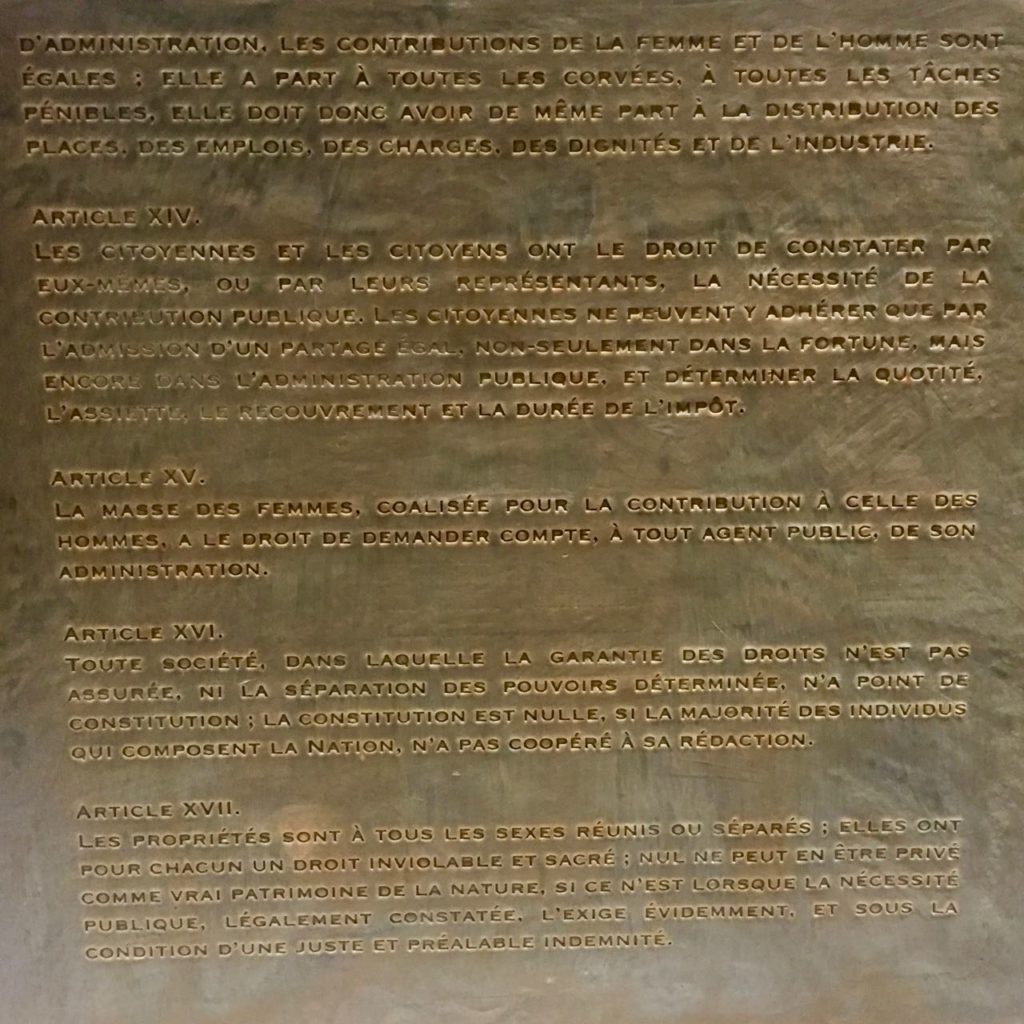
Colored House is a testament to a traditional China on the verge of extinction. The wooden structure originates from Zhejiang province and dates back to the early Qing dynasty (1644-1912). Once common, most of these structures, have vanished from China, making way for urban development. Here, the house rests on crystal bases and is covered in a brightly coloured layer of modern industrial paint. The ancient is covered up by the new.
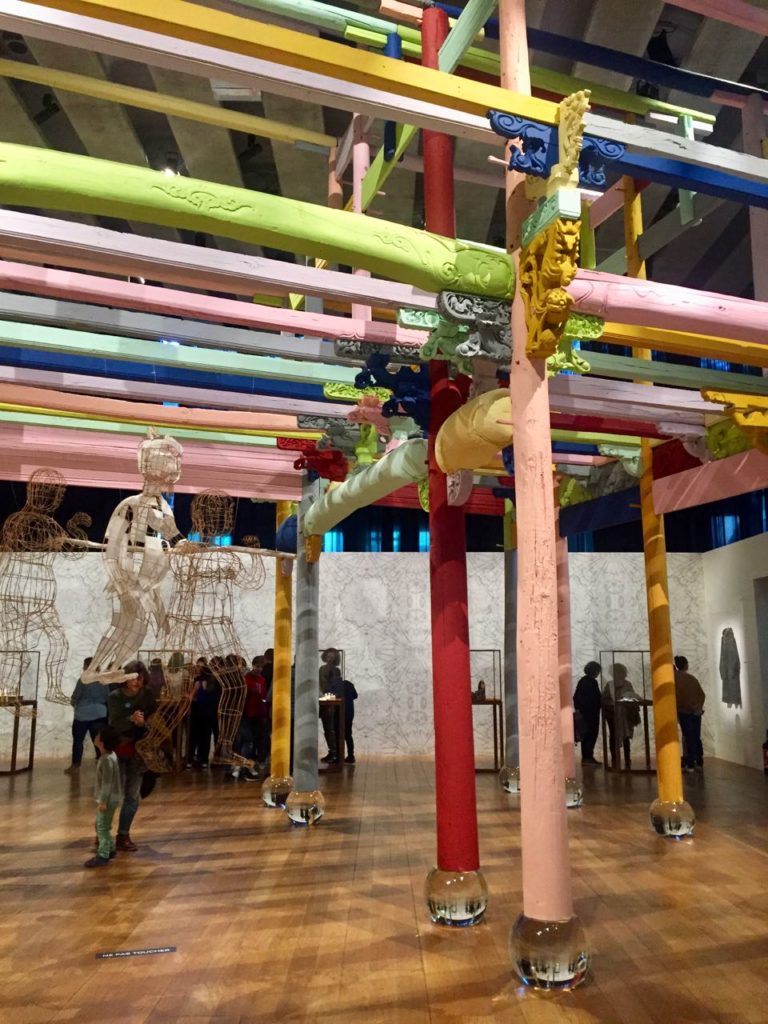
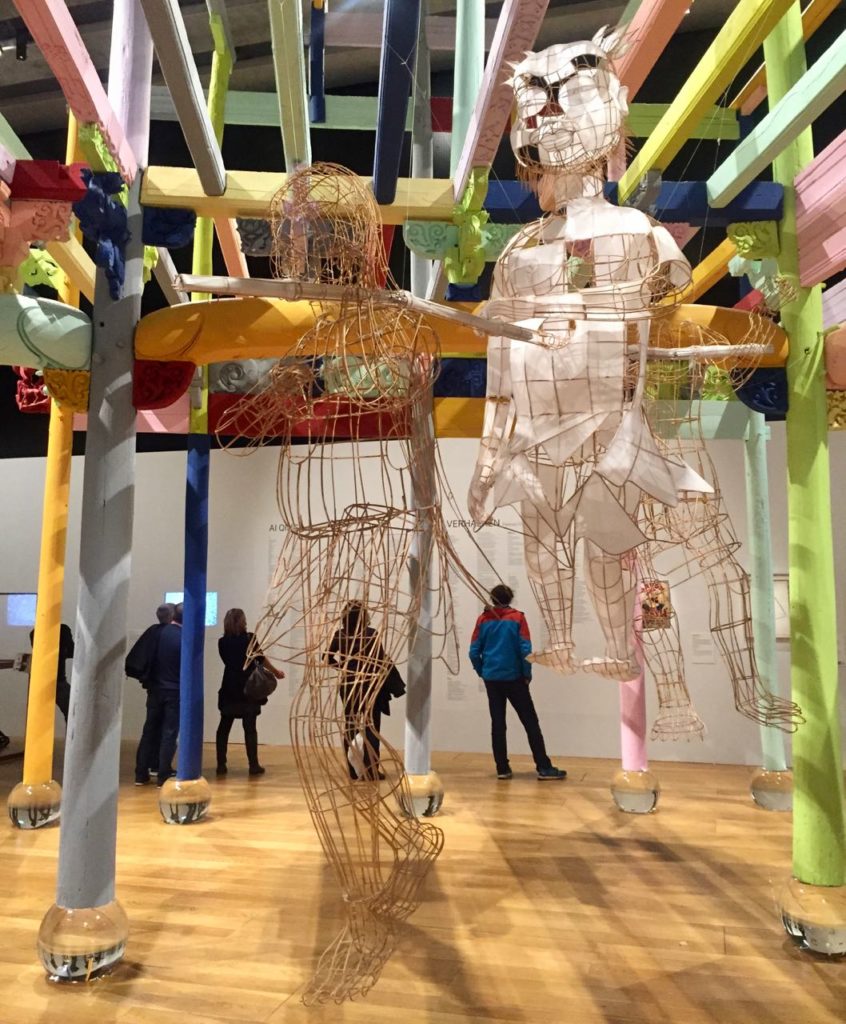
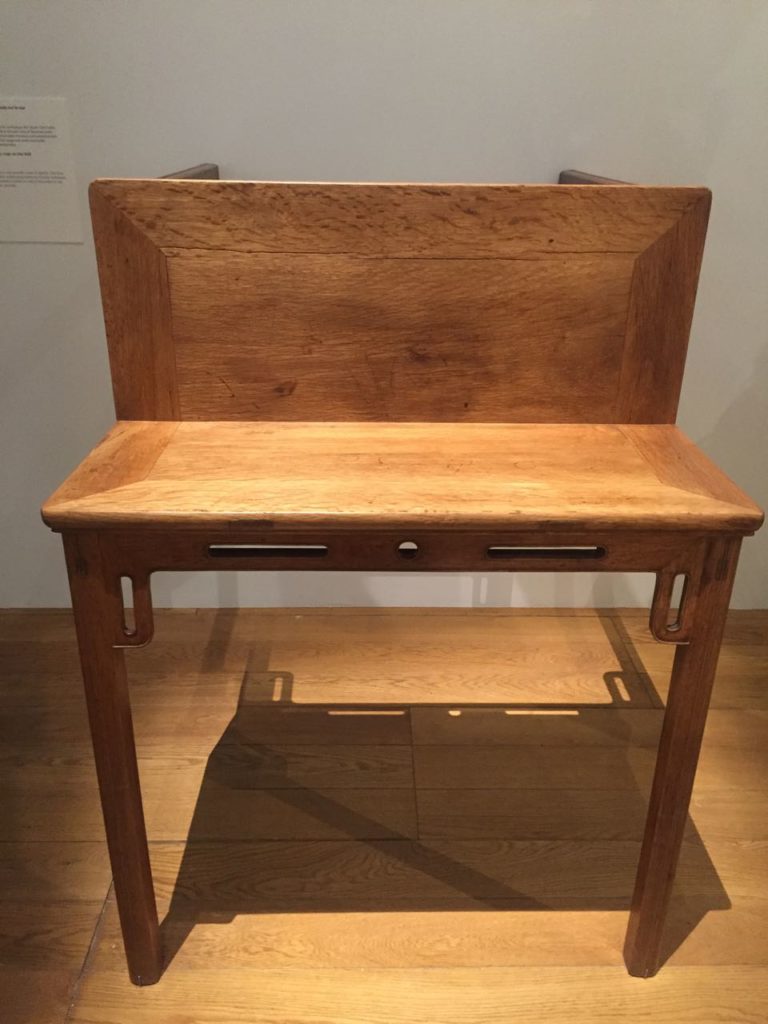
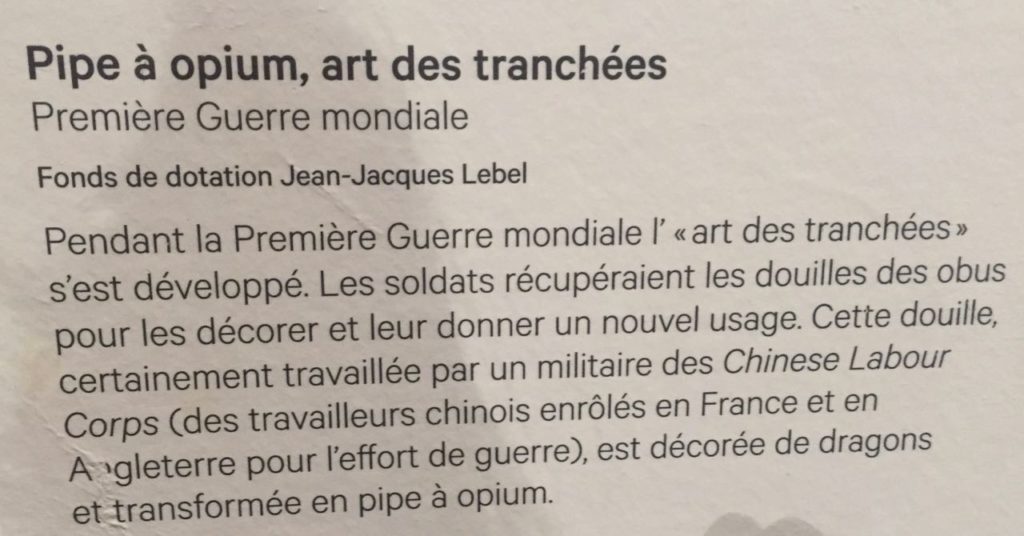

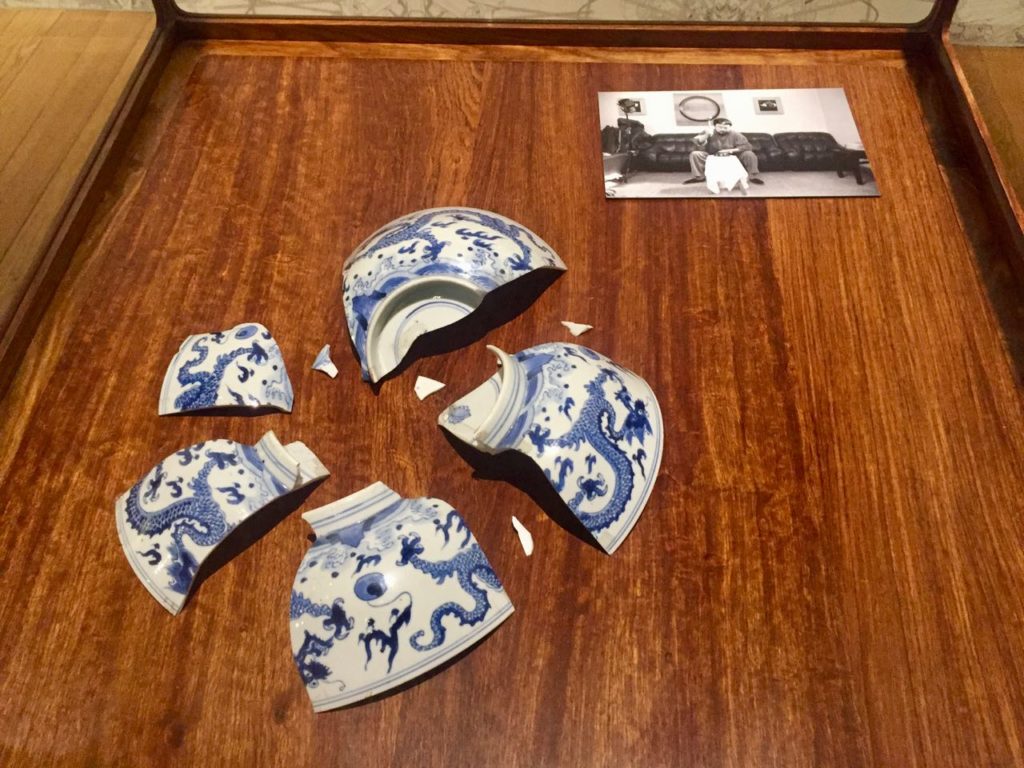
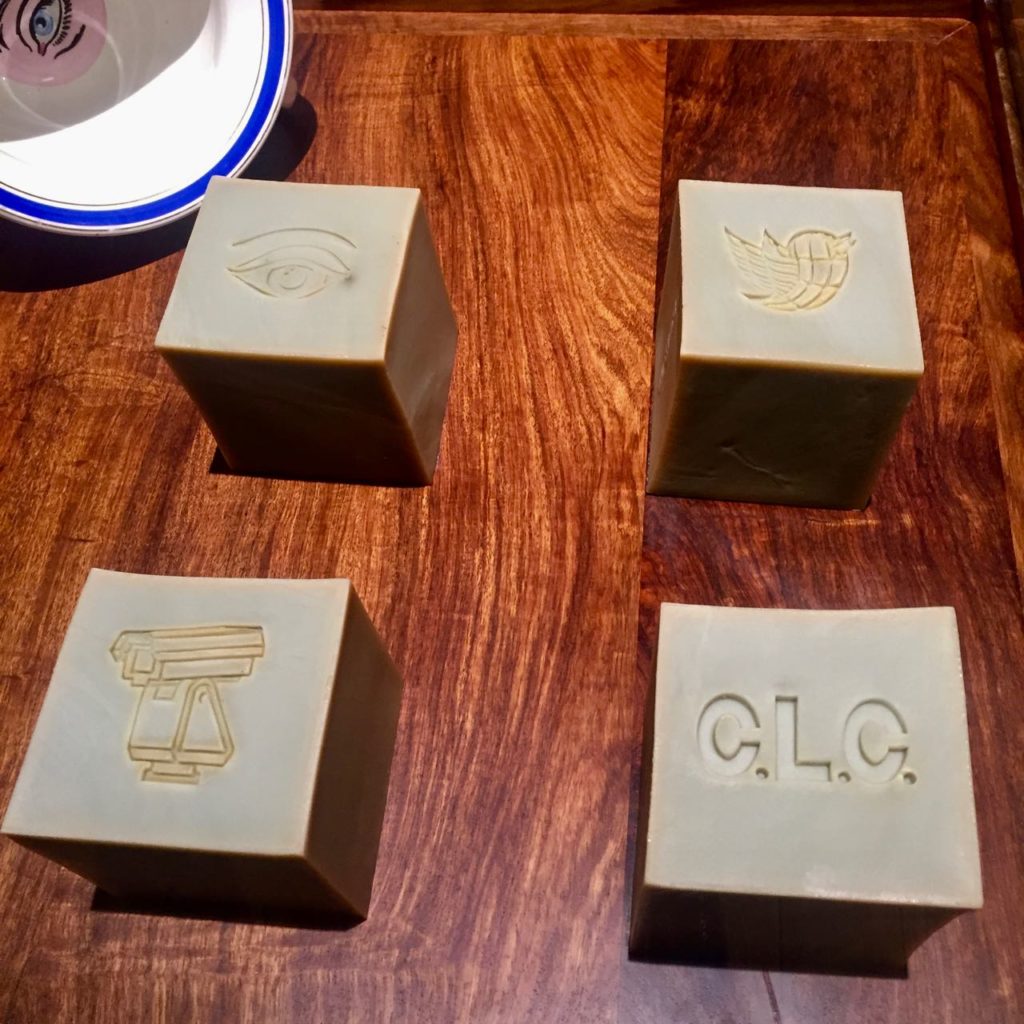


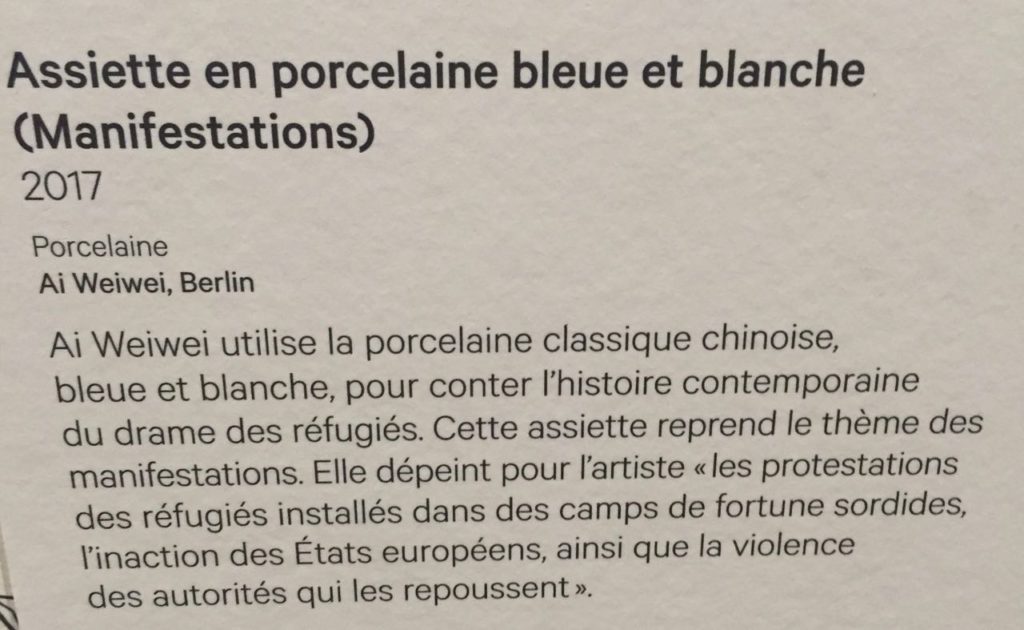
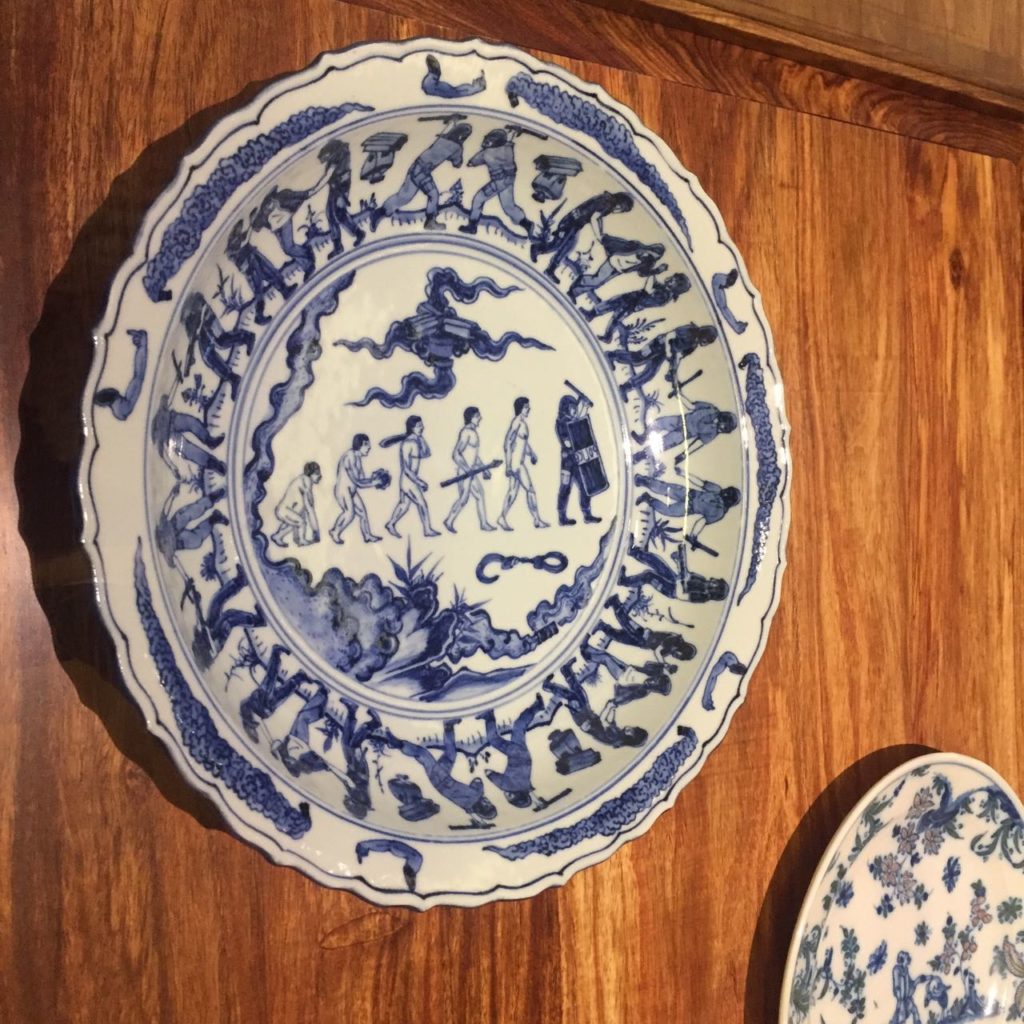
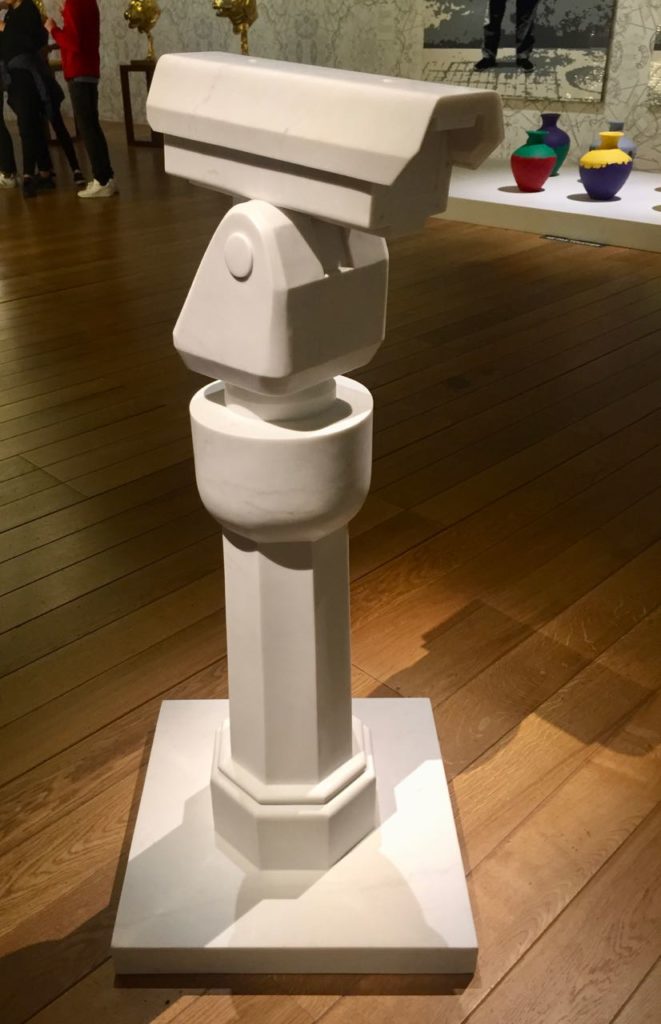
In the background a lego made pixelized copy of Dropping a Han Dynasty Urn, 1995, and on the platform, Coloured Vases, 2006
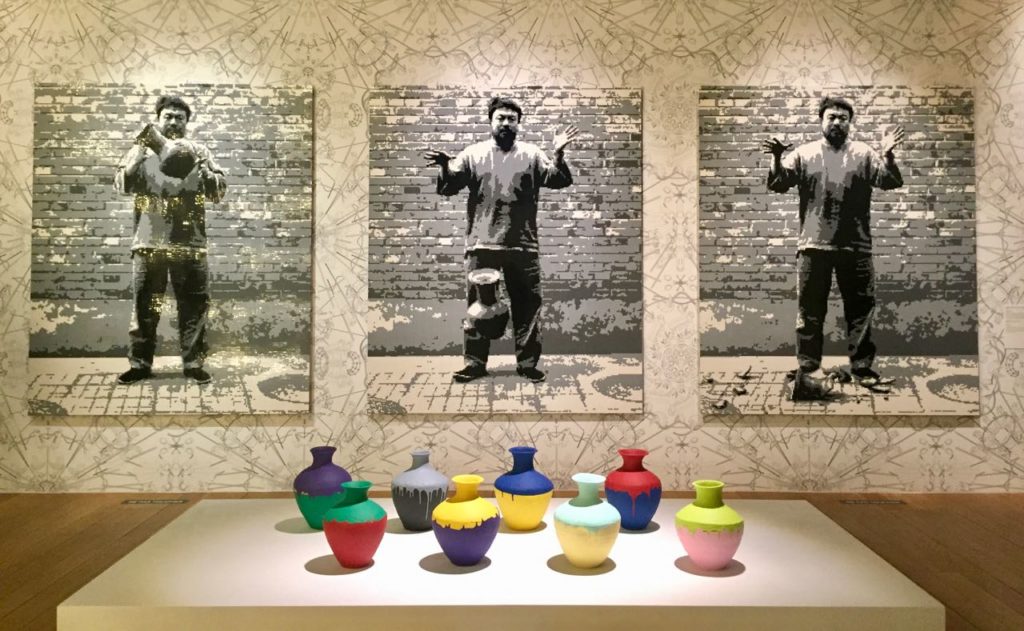
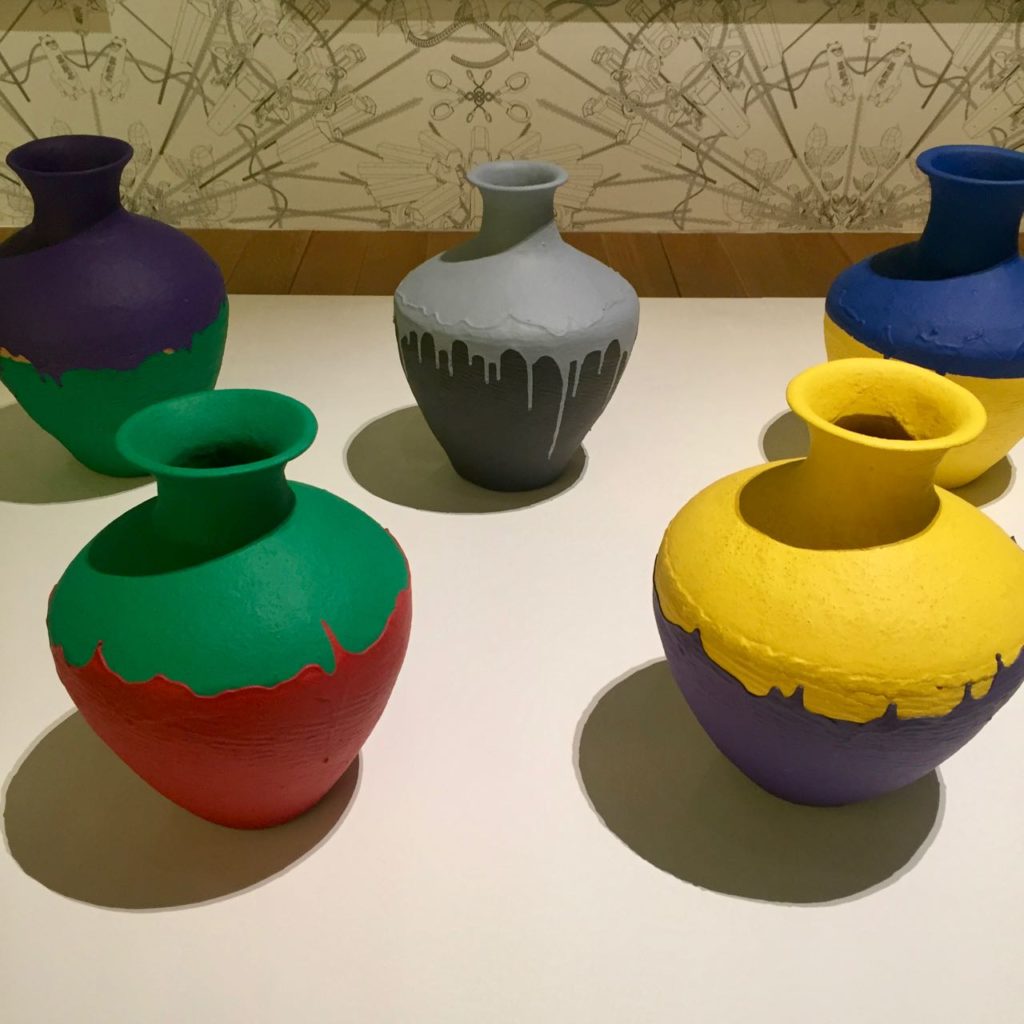
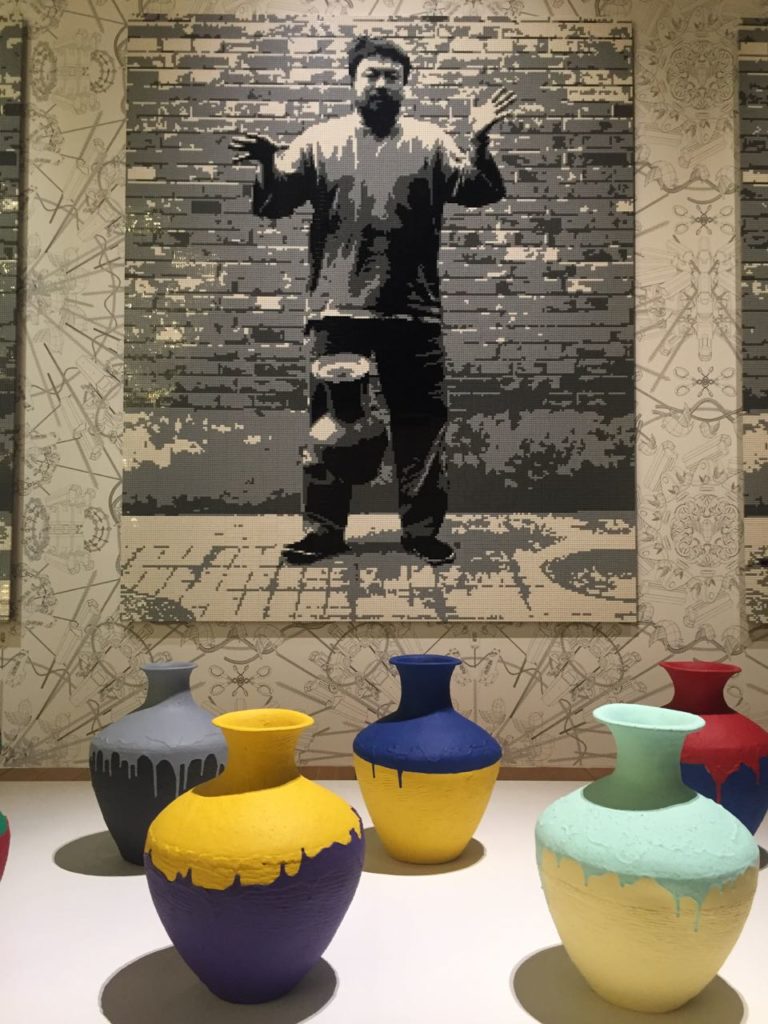
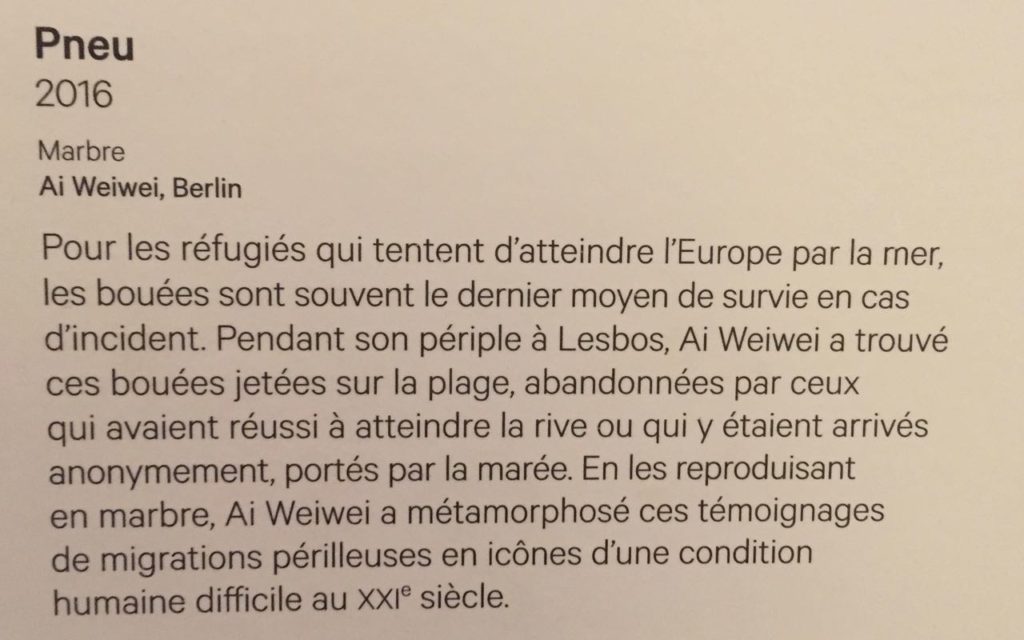
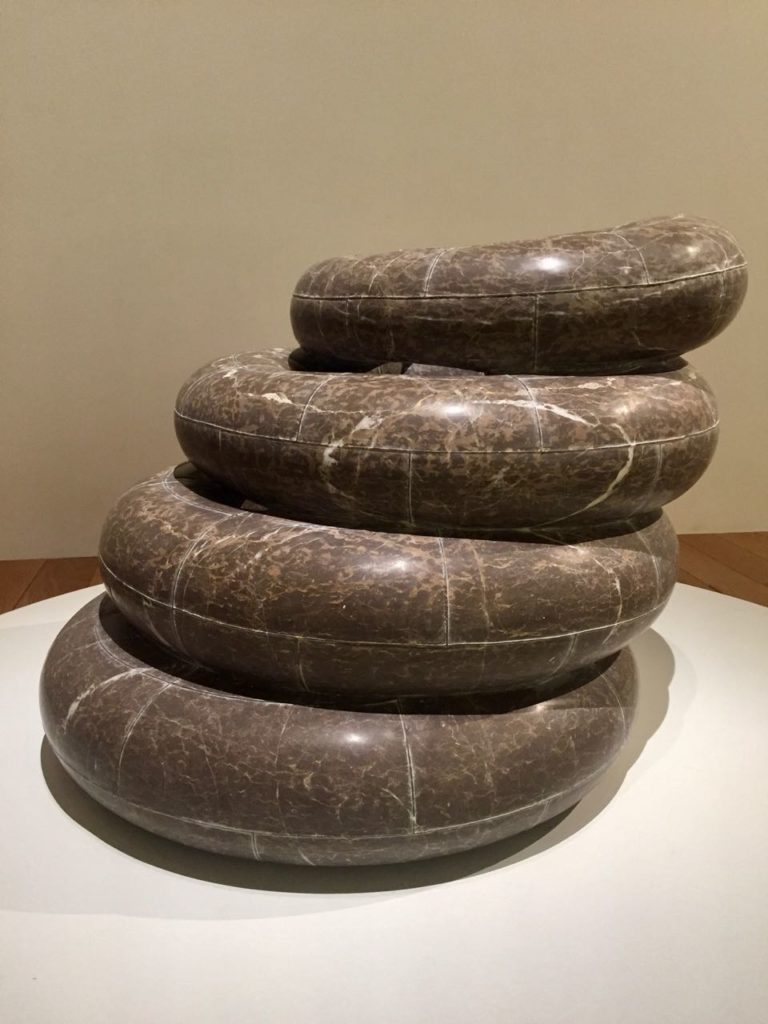
Illuminated bottle rack
Continuing in the spirit of the ready-made, Ai Weiwei takes one of the emblematic pieces by Marcel Duchamp, The Bottle Rack (1914), and proposes a monumental version of it. On this silhouette, he has suspended a series of 61 antique chandeliers. This is the latest in Ai’s series of chandeliers which constitute a kind of superlative glitz, evoking the chandeliers often seen in luxurious settings in contemporary Chinese society.
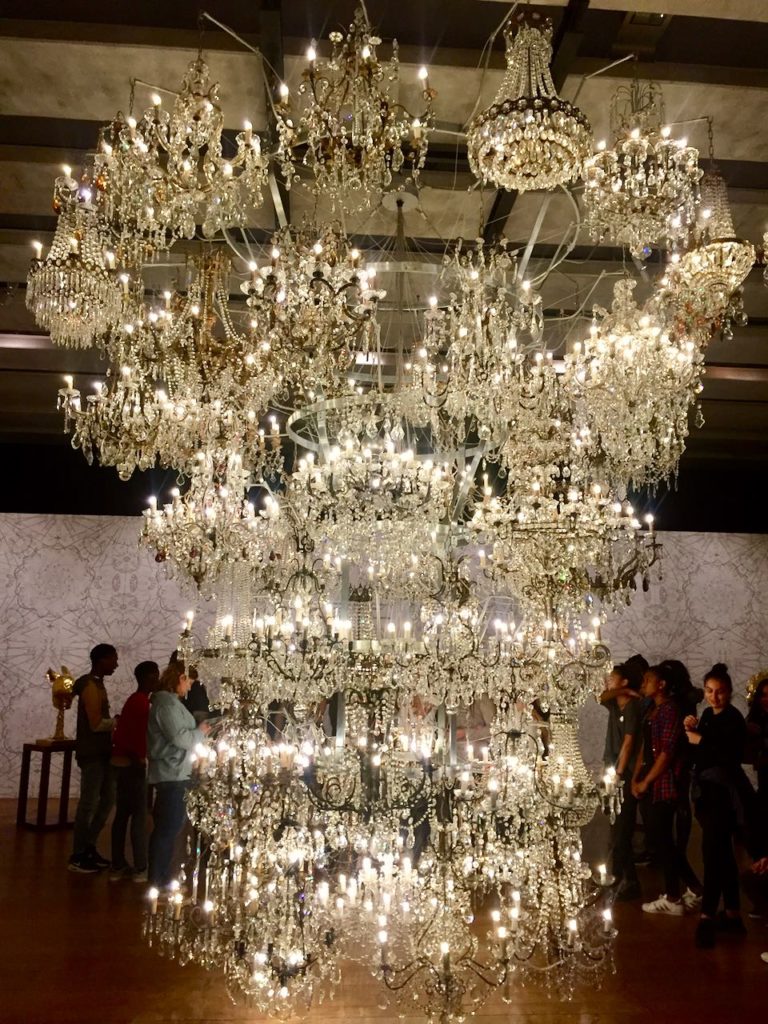
Circle of animals
These twelve animals from the Chinese zodiac, created by a French Jesuit, have been reproduced from a fountain in the Old Summer Palace of the 18th-century Qianlong emperor. By elevating these objects, Ai Weiwei was addressing several historic and contemporary issues. The animals are not Chinese creations, however, they they were looted in 1860, during the Second Opium War, by the French and English army. When two of the animal heads came up at auction in 2009 in Paris, they came to represent that dark period and became a proxy for nationalist arguments. These objects are thus ambivalent in that they are the fruit and symbol of Chinese and Western culture.
